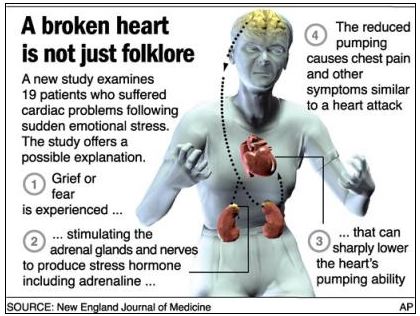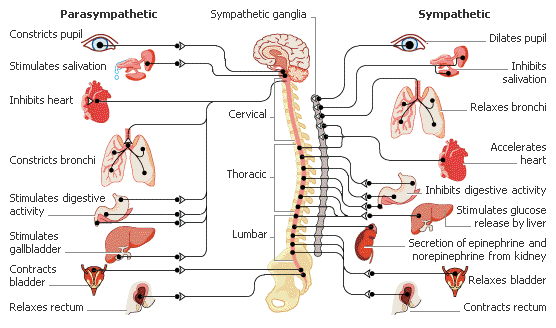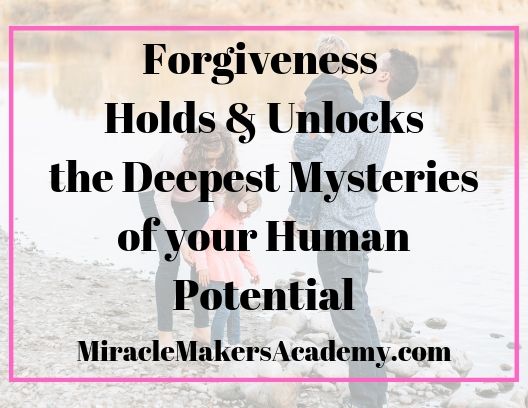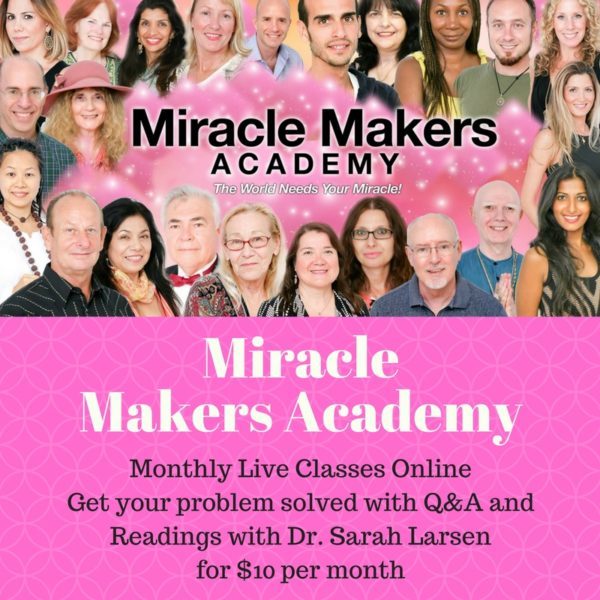Those who love you are not fooled by mistakes you have made or dark images you hold about yourself. They remember your beauty when you feel ugly; your wholeness when you are broken; your innocence when you feel guilty; and your purpose when you are confused.”
? Alan Cohen
One of my earliest memories is of my younger brother Omar! I remember meeting this boy, my cousin, my parents adopted because his dad was killed in an honor killing. Omar was my cousin, younger than me and I knew he would become my brother! He looked at me with such love. And I loved him instantly! I gave him my walkman, all of my cassette tapes and everything I knew he could use before leaving him and my three-month visit to Pakistan.
And I was just a little kid. I understood what he was feeing but didn’t have the words to articulate for either of us. so I didn’t really understand why, AsI got older, I realized we had an emotional addiction in my family. We had an emotional addiction that I would finally understand as I began to learn and counsel, with the work of Candice Pert. Molecules of emotion.
He and I would try to suppress the internal emotional addiction with externally addictive substances.
I have not tried the things he got addicted to like cocaine, or crack. I did get addicted to cigarettes and smoking addiction. Over the years I would try different things brought by shamans in various studies in various countries. Cigarettes and the emotional addictions stayed with me as well as coping mechanisms such as eating disorder, insomnia, and extreme approval addiction with my parents.
He had the “extreme approval” addiction with my parents as well. We shared so many of the same feelings. Two of us, him younger, me female!
I also had the ability to be a natural Spiritual Leader sometimes called “Pirani” as a kid connected to the perception taught to me by my Grandmother!
This deeper ability to see and stay connected to something greater than me! It is a kind of be in service -so more perception opens up!!!
Are there any life problems that seem beyond our power to overcome? Let’s think about that for a minute. In the face of life-threatening problems like alcoholism and drug addiction, excuses for feeling powerless like “It’s too difficult,” “It’s too big,” and “I’m not strong enough,” might spring to mind. Yet we know people who have beaten even these deadly and crippling problems. Two years ago, I had dinner in New York with Patti Davis, daughter of President Ronald Reagan and Nancy Reagan. Patti had just published an essay on Newsweek’s “My Turn” page about her struggle with cocaine addiction and how grateful she would have been for the rehabilitation programs that celebrities today so often treat with utter disrespect. It’s one of the most honest essays I’ve ever read. At our dinner, Patti was celebrating five years of freedom from drugs. She acknowledged how powerful the comfort and pleasure of cocaine had been in her life, but she knew she would never go back to using it. How did she manage to stop? It wasn’t a reluctance to continue disappointing herself or her parents that finally made the difference. She stopped because she no longer wanted to disappoint God, that highest part of herself that all of us share as our connection to the Divine. We all have a place of well-being, bliss, joy, and perfection within us. We are called to be there and from that empowering place we can reach out as Patti has done to help others find it, too. With God, nothing is impossible, and when we align with Spirit, no excuses are needed.
Wayne Dyer
“It takes a lot of courage to release the familiar and seemingly secure, to embrace the new. But there is no real security in what is no longer meaningful.”
? Alan Cohen

What should happen? They should become addicts.This has been studied really carefully.It doesn’t happen; you will have noticed if your grandmother had a hip replacement,she didn’t come out as a junkie. (Laughter)And when I learned this, it seemed so weird to me,so contrary to everything I’d been told, everything I thought I knew,I just thought it couldn’t be right, until I met a man called Bruce Alexander.He’s a professor of psychology in Vancouverwho carried out an incredible experimentI think really helps us to understand this issue.Professor Alexander explained to me,the idea of addiction we’ve all got in our heads, that story,comes partly from a series of experimentsthat were done earlier in the 20th century.They’re really simple.You can do them tonight at home if you feel a little sadistic.You get a rat and you put it in a cage, and you give it two water bottles:One is just water, and the other is water laced with either heroin or cocaine.If you do that, the rat will almost always prefer the drug waterand almost always kill itself quite quickly.So there you go, right? That’s how we think it works.In the ’70s, Professor Alexander comes along and he looks at this experimentand he noticed something.He said ah, we’re putting the rat in an empty cage.It’s got nothing to do except use these drugs.Let’s try something different.So Professor Alexander built a cage that he called “Rat Park,”which is basically heaven for rats.They’ve got loads of cheese, they’ve got loads of colored balls,they’ve got loads of tunnels.Crucially, they’ve got loads of friends. They can have loads of sex.And they’ve got both the water bottles, the normal water and the drugged water.But here’s the fascinating thing:In Rat Park, they don’t like the drug water.They almost never use it.None of them ever use it compulsively.None of them ever overdose.You go from almost 100 percent overdose when they’re isolatedto zero percent overdose when they have happy and connected lives.Now, when he first saw this, Professor Alexander thought,maybe this is just a thing about rats, they’re quite different to us.Maybe not as different as we’d like, but, you know –But fortunately, there was a human experimentinto the exact same principle happening at the exact same time.It was called the Vietnam War.In Vietnam, 20 percent of all American troops were using loads of heroin,and if you look at the news reports from the time,they were really worried, because they thought, my God, we’re going to havehundreds of thousands of junkies on the streets of the United Stateswhen the war ends; it made total sense.Now, those soldiers who were using loads of heroin were followed home.
Are there any life problems that seem beyond our power to overcome? Let’s think about that for a minute. In the face of life-threatening problems like alcoholism and drug addiction, excuses for feeling powerless like “It’s too difficult,” “It’s too big,” and “I’m not strong enough,” might spring to mind. Yet we know people who have beaten even these deadly and crippling problems. Two years ago, I had dinner in New York with Patti Davis, daughter of President Ronald Reagan and Nancy Reagan. Patti had just published an essay on Newsweek’s “My Turn” page about her struggle with cocaine addiction and how grateful she would have been for the rehabilitation programs that celebrities today so often treat with utter disrespect. It’s one of the most honest essays I’ve ever read. At our dinner, Patti was celebrating five years of freedom from drugs. She acknowledged how powerful the comfort and pleasure of cocaine had been in her life, but she knew she would never go back to using it. How did she manage to stop? It wasn’t a reluctance to continue disappointing herself or her parents that finally made the difference. She stopped because she no longer wanted to disappoint God, that highest part of herself that all of us share as our connection to the Divine. We all have a place of well-being, bliss, joy, and perfection within us. We are called to be there and from that empowering place we can reach out as Patti has done to help others find it, too. With God, nothing is impossible, and when we align with Spirit, no excuses are needed.
Wayne Dyer
The Archives of General Psychiatry did a really detailed study,and what happened to them?It turns out they didn’t go to rehab. They didn’t go into withdrawal.Ninety-five percent of them just stopped.Now, if you believe the story about chemical hooks,that makes absolutely no sense, but Professor Alexander began to thinkthere might be a different story about addiction.He said, what if addiction isn’t about your chemical hooks?What if addiction is about your cage?What if addiction is an adaptation to your environment?Looking at this,there was another professor called Peter Cohen in the Netherlandswho said, maybe we shouldn’t even call it addiction.Maybe we should call it bonding.Human beings have a natural and innate need to bond,and when we’re happy and healthy, we’ll bond and connect with each other,but if you can’t do that,because you’re traumatized or isolated or beaten down by life,you will bond with something that will give you some sense of relief.Now, that might be gambling, that might be pornography,that might be cocaine, that might be cannabis,but you will bond and connect with something because that’s our nature.That’s what we want as human beings.And at first, I found this quite a difficult thing to get my head around,but one way that helped me to think about it is,I can see, I’ve got over by my seat a bottle of water, right?I’m looking at lots of you, and lots of you have bottles of water with you.Forget the drugs. Forget the drug war.Totally legally, all of those bottles of water could be bottles of vodka, right?We could all be getting drunk — I might after this — (Laughter) –but we’re not.Now, because you’ve been able to afford the approximately gazillion poundsthat it costs to get into a TED Talk, I’m guessing you guys could affordto be drinking vodka for the next six months.You wouldn’t end up homeless.You’re not going to do that, and the reason you’re not going to do thatis not because anyone’s stopping you.It’s because you’ve got bonds and connectionsthat you want to be present for.You’ve got work you love. You’ve got people you love.You’ve got healthy relationships.And a core part of addiction,I came to think, and I believe the evidence suggests,is about not being able to bear to be present in your life.Now, this has really significant implications.The most obvious implications are for the War on Drugs.In Arizona, I went out with a group of womenwho were made to wear t-shirts saying, “I was a drug addict,”and go out on chain gangs and dig graves while members of the public jeer at them,and when those women get out of prison, they’re going to have criminal recordsthat mean they’ll never work in the legal economy again.Now, that’s a very extreme example, obviously, in the case of the chain gang,but actually almost everywhere in the worldwe treat addicts to some degree like that.We punish them. We shame them. We give them criminal records.We put barriers between them reconnecting.There was a doctor in Canada, Dr. Gabor Maté, an amazing man,who said to me, if you wanted to design a system that would make addiction worse,you would design that system.Now, there’s a place that decided to do the exact opposite,and I went there to see how it worked.In the year 2000, Portugal had one of the worst drug problems in Europe.One percent of the population was addicted to heroin, which is kind of mind-blowing,and every year, they tried the American way more and more.They punished people and stigmatized them and shamed them more,and every year, the problem got worse.And one day, the Prime Minister and the leader of the opposition got together,and basically said, look, we can’t go onwith a country where we’re having ever more people becoming heroin addicts.Let’s set up a panel of scientists and doctorsto figure out what would genuinely solve the problem.And they set up a panel led by an amazing man called Dr. João Goulão,to look at all this new evidence,and they came back and they said,”Decriminalize all drugs from cannabis to crack, but” –and this is the crucial next step –“take all the money we used to spend on cutting addicts off,on disconnecting them,and spend it instead on reconnecting them with society.”And that’s not really what we think of as drug treatmentin the United States and Britain.So they do do residential rehab,they do psychological therapy, that does have some value.But the biggest thing they did was the complete opposite of what we do:a massive program of job creation for addicts,and microloans for addicts to set up small businesses.So say you used to be a mechanic.When you’re ready, they’ll go to a garage, and they’ll say,if you employ this guy for a year, we’ll pay half his wages.The goal was to make sure that every addict in Portugalhad something to get out of bed for in the morning.And when I went and met the addicts in Portugal,what they said is, as they rediscovered purpose,they rediscovered bonds and relationships with the wider society.It’ll be 15 years this year since that experiment began,and the results are in:injecting drug use is down in Portugal,according to the British Journal of Criminology,by 50 percent, five-zero percent.Overdose is massively down, HIV is massively down among addicts.Addiction in every study is significantly down.One of the ways you know it’s worked so well is that almost nobody in Portugalwants to go back to the old system.Now, that’s the political implications.I actually think there’s a layer of implicationsto all this research below that.We live in a culture where people feel really increasingly vulnerableto all sorts of addictions, whether it’s to their smartphonesor to shopping or to eating.Before these talks began — you guys know this –we were told we weren’t allowed to have our smartphones on,and I have to say, a lot of you looked an awful lot likeaddicts who were told their dealer was going to be unavailablefor the next couple of hours. (Laughter)A lot of us feel like that, and it might sound weird to say,I’ve been talking about how disconnection is a major driver of addictionand weird to say it’s growing,because you think we’re the most connected society that’s ever been, surely.But I increasingly began to think that the connections we haveor think we have, are like a kind of parody of human connection.If you have a crisis in your life, you’ll notice something.It won’t be your Twitter followers who come to sit with you.It won’t be your Facebook friends who help you turn it round.It’ll be your flesh and blood friends who you have deep and nuancedand textured, face-to-face relationships with,and there’s a study I learned about from Bill McKibben, the environmental writer,that I think tells us a lot about this.It looked at the number of close friends the average American believesthey can call on in a crisis.That number has been declining steadily since the 1950s.The amount of floor space an individual has in their homehas been steadily increasing,and I think that’s like a metaphorfor the choice we’ve made as a culture.We’ve traded floorspace for friends, we’ve traded stuff for connections,and the result is we are one of the loneliest societies there has ever been.And Bruce Alexander, the guy who did the Rat Park experiment, says,we talk all the time in addiction about individual recovery,and it’s right to talk about that,but we need to talk much more about social recovery.Something’s gone wrong with us, not just with individuals but as a group,and we’ve created a society where, for a lot of us,life looks a whole lot more like that isolated cageand a whole lot less like Rat Park.If I’m honest, this isn’t why I went into it.I didn’t go in to the discover the political stuff, the social stuff.I wanted to know how to help the people I love.And when I came back from this long journey and I’d learned all this,I looked at the addicts in my life,and if you’re really candid, it’s hard loving an addict,and there’s going to be lots of people who know in this room.You are angry a lot of the time,and I think one of the reasons why this debate is so chargedis because it runs through the heart of each of us, right?Everyone has a bit of them that looks at an addict and thinks,I wish someone would just stop you.And the kind of scripts we’re told for how to deal with the addicts in our livesis typified by, I think,the reality show “Intervention,” if you guys have ever seen it.I think everything in our lives is defined by reality TV,but that’s another TED Talk.If you’ve ever seen the show “Intervention,”it’s a pretty simple premise.Get an addict, all the people in their life, gather them together,confront them with what they’re doing, and they say, if you don’t shape up,we’re going to cut you off.So what they do is they take the connection to the addict,and they threaten it, they make it contingenton the addict behaving the way they want.And I began to think, I began to see why that approach doesn’t work,and I began to think that’s almost like the importing of the logic of the Drug Warinto our private lives.So I was thinking, how could I be Portuguese?And what I’ve tried to do now, and I can’t tell you I do it consistentlyand I can’t tell you it’s easy,is to say to the addicts in my lifethat I want to deepen the connection with them,to say to them, I love you whether you’re using or you’re not.I love you, whatever state you’re in,and if you need me, I’ll come and sit with youbecause I love you and I don’t want you to be aloneor to feel alone.And I think the core of that message –you’re not alone, we love you –has to be at every level of how we respond to addicts,socially, politically and individually.For 100 years now, we’ve been singing war songs about addicts.I think all along we should have been singing love songs to them,because the opposite of addiction is not sobriety.The opposite of addiction is connection.Thank you.
Opioid dependence poses significant public health risks arising from associated morbidity and mortality caused by accidents, infectious disease, and social ramifications of crime and unemployment, among other complications. Opioid use, acute and chronic, is also associated with weight gain, glycemic dysregulation, and dental pathology. The literature supporting the connection between opiate use and development of preference for sweet tastes is reviewed, and further association with dental pathology, weight gain, and loss of glycemic control are considered. We discuss the impact of sweet tastes on the endogenous opioid system as well as clinical implications for analgesia and treating the opiate-dependent patient.Keywords: opioid, sugar, weight gain, diabetes, analgesia, dental pathology
Activation of the mu-opiate receptor is associated with several effects on glucose intake and glycemic control. These include inducing sweet, or palatable, taste preference; hyperglycemia induced by direct action on pancreatic islet cells, likely insulin resistance caused by dietary preference for sugary foods; weight gain and tooth decay likely also associated with preference for sweet foods. Furthermore, sweet-tasting substances are associated with activation of the endogenous opiate system, leading to clinically significant analgesia that may augment opiate treatment, or hinder it through tolerance. Opiate antagonists, like naltrexone, are not associated with such weight gain and glycemic dysregulation. Further research may determine that opiate antagonist maintenance treatment may be preferable in opiate-dependent patients at risk for weight gain and diabetes. Methadone-maintained patients are especially susceptible to weight gain and diabetes, and have poor follow-up with primary care treatment, thereby making them an especially vulnerable population. While some evidence exists that buprenorphine behaves like naltrexone, with respect to the above syndromes, further research is indicated. Lastly, given the rapidly rising rates of prescription opiate abuse and dependence, future research should determine whether such opioid maintenance carries similar public health risks of obesity, tooth decay, and metabolic pathology.

















